Don’t Know Squat
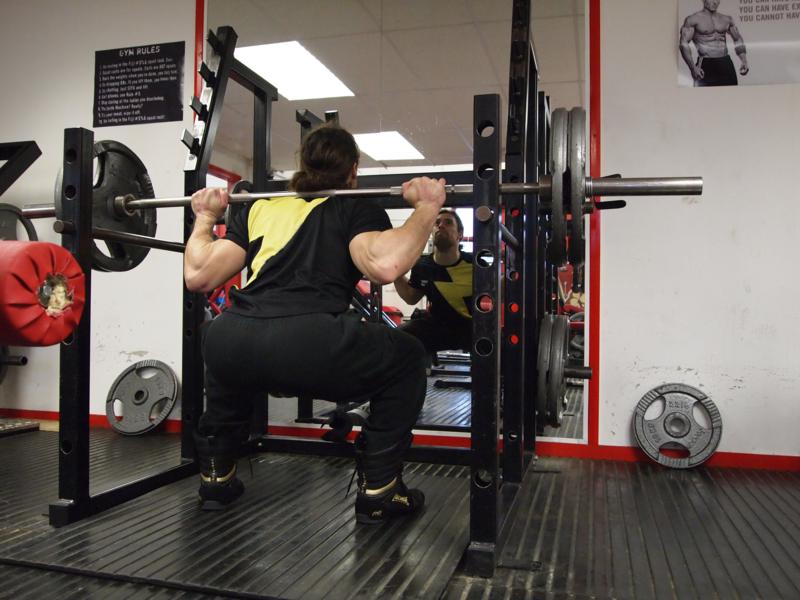
Alongside the deadlift, there can be no argument that the squat is the King of Exercises (in weight lifting, anyway). Some even rate the squat higher than the deadlift, but that’s a matter of much discussion.
Simply put, squats rock. They ravage the majority of muscles in your entire body, burn a ridiculous amount of energy and develop sheer core strength like nothing else. There is, however, massive disagreement about the ‘best’ way to squat – as if there is one universal ‘best’ way to do anything.
Obviously, there is no best way to squat: it depends entirely on your shape, experience, strengths and weaknesses. If a fat guy with short legs and a weak lower back tries to squat like a tall guy with bad knees, he’ll probably break. Ditto the other way around.
These is one aspect of squatting, however, upon which I would like to express my opinion (from my admittedly limited knowledge base). Specifically, it is the matter of ‘depth’.
Deep Squatting?
Many people will advise you not to go ‘too low’ when squatting, i.e. to stop when your upper legs are parallel with the ground. I maintain that this is total bullshit: as with most things (eh, eh) deeper is better. As long as you are fit and can maintain proper technique and posture, squatting as deep as possible will help with all around leg power, development through your glutes and hamstrings and stability in lots of other athletic movements.
In fact, research suggests that only squatting to parallel is actually worse for you than doing deeper. For one thing, your knees are better suited to going lower:
“When you look at the structure of the knee, you’ll note that at about 90 degrees flexion, the tibia’s sloped shape allows it to shear upwards and over the femur. This causes a lot of compressive force against the patella, and pulls forcefully against the posterior cruciate ligament.
These potentially destructive forces become significantly less as you descend further into the squat postion, largely due to the fact that the tibia’s surface isn’t as sloped posteriorly, where it articulates with the femur.” — Dr. Frederick C. Hatfield
What’s more, because you can shift much greater weight when you’re hardly bending your legs, you have to squat much heavier weight to get the same development. This means you start over-stressing your shoulders, neck, lower back and knees for no good reason at all.
That said, different body shapes react differently to various squatting technique. People with short legs, like me, can get away with just about any kind of squatting. If you have a short body as well, you are pretty much the somatic ideal for squatting
The longer your body, however, the more prone to injury you may find yourself when doing some of the more intense squat variations. Those with long legs, for example, may benefit from using a wider stance and keeping their movements relatively shallow. Those with long torsos often also benefit from sticking to a high bar position, whilst also keeping their movements quite shallow.
In case these are new concepts to you, here are the differences:
[accordion] [acc_item title=”Narrow Stance” active=”true”]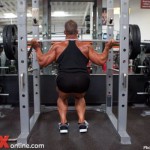
Most people squat with their feet about shoulder-width apart, sometimes even closer together. Honestly, I’m not sure why. Not only does it place a ludicrous amount of pressure on your knees, it also focuses on your quads far more than any other part of your leg, contributing to a less even leg development.
I suppose I’ve just answered my own question there: people use narrow-width squats to develop their quads…at the expense of their knees. I think it’s a body-building thing.
[/acc_item] [acc_item title=”Wide Stance” active=”true”]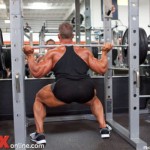
By placing your feet farther than shoulder width apart, you’ll take a lot of pressure off your knees, increase the range of motion through your ankles and recruit your glutes and hamstrings much more than with narrow stance squats. Not only can this contribute towards a more even and functional leg development, it will also increase the weight you can shift…which is pretty cool.
Although some would say that wide stance squats don’t work your quads hard enough, I would always choose them over narrow stance squats and, if I really want to hammer my quads, I’d just throw in some sets of front squats as well. Then you’ll get powerful quads and still be able to walk in 30 years.
[/acc_item]
[acc_item title=”High-Bar” active=”true”]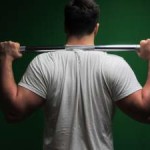
The ‘normal’ way of squatting is called high-bar and involves resting the bar over your traps, above the posterior deltoids at the base of the neck . NOT – as some people seem to think is clever – on your neck! Place your hands just wider than shoulder-width apart and squeeze your shoulder blades together – BAM, you’re away.
Otherwise know as an ‘Olympic Squat’, this position is quite common amongst body builders and dudes looking to GET JACKED, because it places most the emphasis on the quads, removes work from the glutes and keeps stress on the lower back to a minimum. The downside is that it puts quite a lot of pressure on the knees…
[/acc_item]
[acc_item title=”Low-Bar” active=”true”]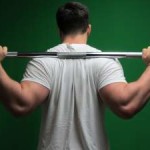
As the name suggests, Low-Bar squatting involves placing the bar lower on your back: just across your posterior deltoids, between your mid-lower traps and your shoulder blades – and gripping it farther apart. This removes a fair amount of the pressure from your knees, but will increase the pressure on your lower back because of the increased ‘lean’ of your torso.
It is a little tricky to get used to at first, but once you’ve nailed the Low-Bar position you’ll find your glutes and hamstrings are being recruited far more than with high-bar position. As a result of making more use of these huge muscle groups, you will probably find that you can squat heavier weights – which is probably why most powerlifters use the low-bar position.
[/acc_item]
[acc_item title=”Athlete Squat” active=”true”]
As far as I understand it, the Athlete’s Squat involves placing the bar between the High and Low position. This places less pressure on the knees than the high-bar position and less pressure on the lower back than the low-bar position.
All in all, it’s probably the safest and most effective option. You won’t shift the same weight as with low-bar and you won’t get the same quad development as high-bar…but you also won’t cripple yourself. Probably.
[/acc_item] [/accordion] [space height=”10″]
In short, there are enough variations of squat for you to adjust your technique to suit your body and training style. Instead of doing silly half-squats because people say they’re ‘better for your knees’, for example, consider a lower bar position and a wider stance.
If you want my advice, ask somebody (knowledgeable and honest) to watch your form and comment. When weight-lifting, what feels the most badass if often doing you the most damage – this is especially the case with squats.
Happy squatting!